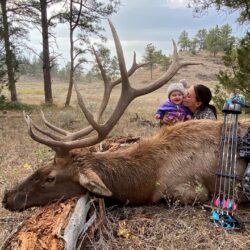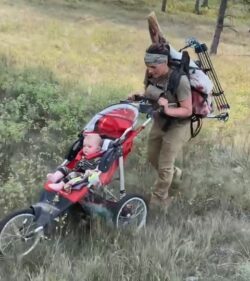Bow hunting is hard. It takes practice, attitude, patience, commitment, and muscle to consistently tag out with a stick and string.
Archery has been around much longer than more modern weapons. Initially, ancient hunters relied on sling rocks, stabbing spears, and thrown axes. They certainly increased the range that a hunter could kill a critter. With practice, their range could grow.
When the first arrows were created, they were not shot with a string, they were thrown with a stick called an Atlatl. This leverage increased range and speed of a wooden shaft arrow.
Later, bows were made from strong, flexible wood, like Osage Orange. Wood tended to weaken and break over time. They were strengthened with animal skins, antler, and horn. Sheep eater Indians, native to northern Yellowstone Park, soaked Bighorn sheep horns in hot springs, to soften the horn. It was then added to their wooden bows to add strength and durability. These bows were a wanted trade item by all the western tribes.
Today we use laminated woods to make traditional and recurve bows. Other modern bows incorporate pulleys, cables, and components to build compound bows. Arrows are made from aluminum or graphite and can fly over 300 feet per second. This means greater range and power.
Alishia Zemlicka is Bozeman’s Amazon woman archer. She and her husband Lucas are cross trainers and recently new parents. Their little girl, Payten, hunt Montana and the Dakotas. Recently both Lucas and the Bow Queen, harvested great bull elk with their bows.
Not to be outdone, Alishia finished her season with a fine archery buck. To harvest a trophy buck, you must constantly roll the dice on smaller deer. Once you let a decent buck pass, there are no guarantees that you will see something better.
Women are the fastest growing population of hunters. It makes sense that they are also Hunters and Gatherers. Harvesting and consuming wild, healthy food is important. For many hunters, it is why they hunt. Wild foods have no harmful chemical, hormones, or additives. What you see is what you get.
It is true that all hunters should have their wild big game tested for quality and health. Chronic Wasting Disease has sadly become a concern. Local wildlife agencies will test your meat for free and confirm the meats wellness. In the interim, you can allow your meat to age prior to cutting it up.
Welcome to the ranks of ethical and sporting hunters!
Montana Grant